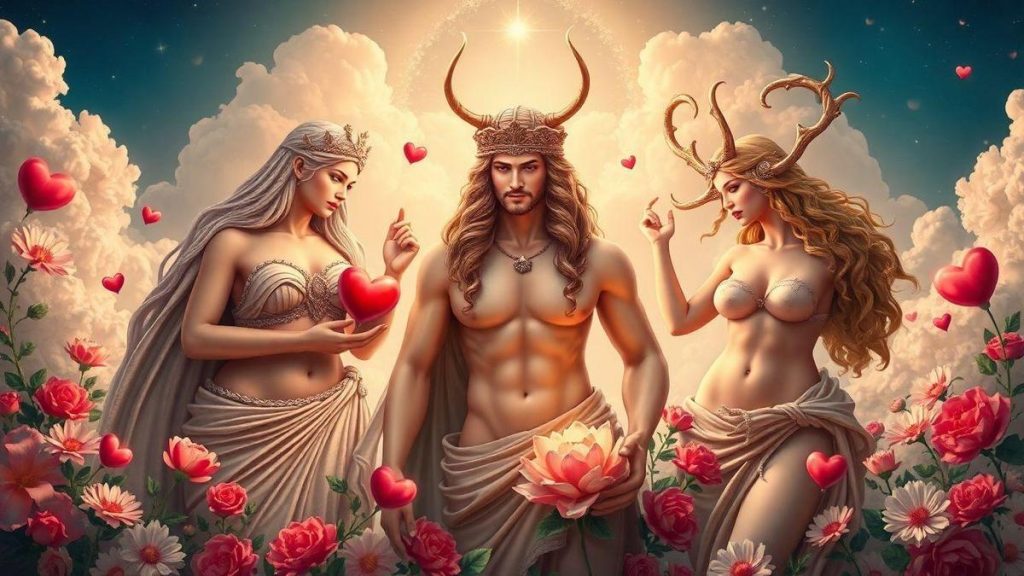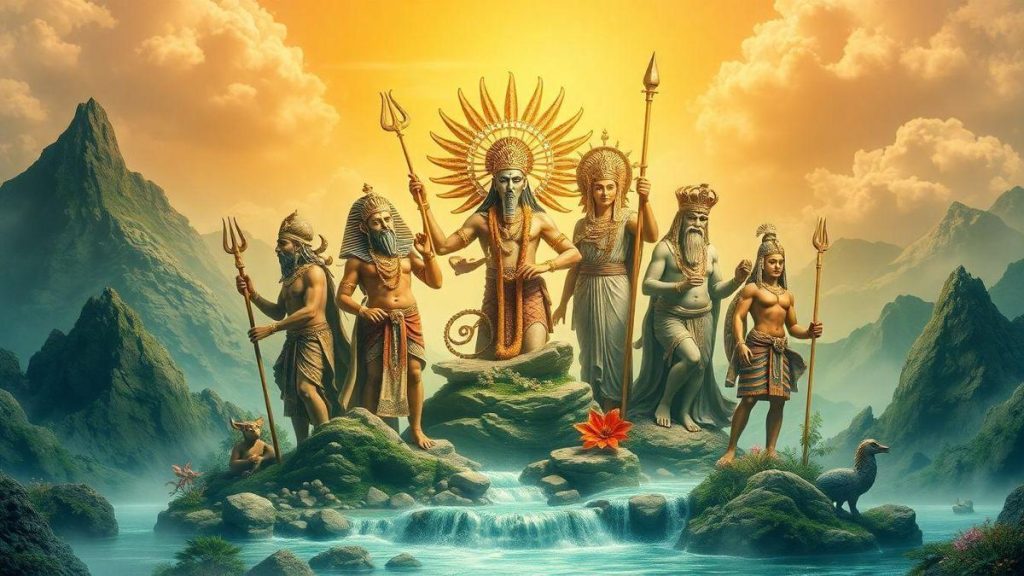Natural cycles in Aztec mythology are intrinsically linked to the understanding of how gods and natural forces interact. The Aztecs believed that life on Earth was deeply connected to the cycles of the sun, moon, and seasons. Each god had a specific role influencing these cycles, and harmony among them was seen as essential for the survival of society. For example, Tlaloc, the god of rain, was fundamental to agriculture, while Quetzalcoatl, the god of wisdom and fertility, symbolized growth and prosperity.
The Aztecs closely observed changes in nature, such as the seasons, bird migrations, and plant growth. These observations were used to predict events and plan agricultural and religious activities. Therefore, Aztec mythology was not just a set of stories but a complex system guiding daily life and ritual practices. It was believed that disharmony in natural cycles could lead to disasters like droughts or floods, and the Aztecs performed rituals to appease the gods and restore balance.
Moreover, the Aztecs used a ritual calendar that reflected these natural cycles. The Tonalpohualli, a 260-day calendar, was closely related to the cycles of life and death, with each day associated with a specific god. This influenced not only agriculture but also social and political life. Dates were chosen based on astrological and religious considerations, and every activity—from marriages to wars—was planned according to these cycles.
The interconnection between gods and natural cycles in Aztec mythology emphasized the importance of respecting and understanding nature. The Aztecs did not see humans as rulers of the Earth but as part of a larger system that needed to be respected and balanced. This holistic view is one reason why Aztec culture is fascinating and worthy of study, as it offers valuable lessons about the relationship between humans and the environment.
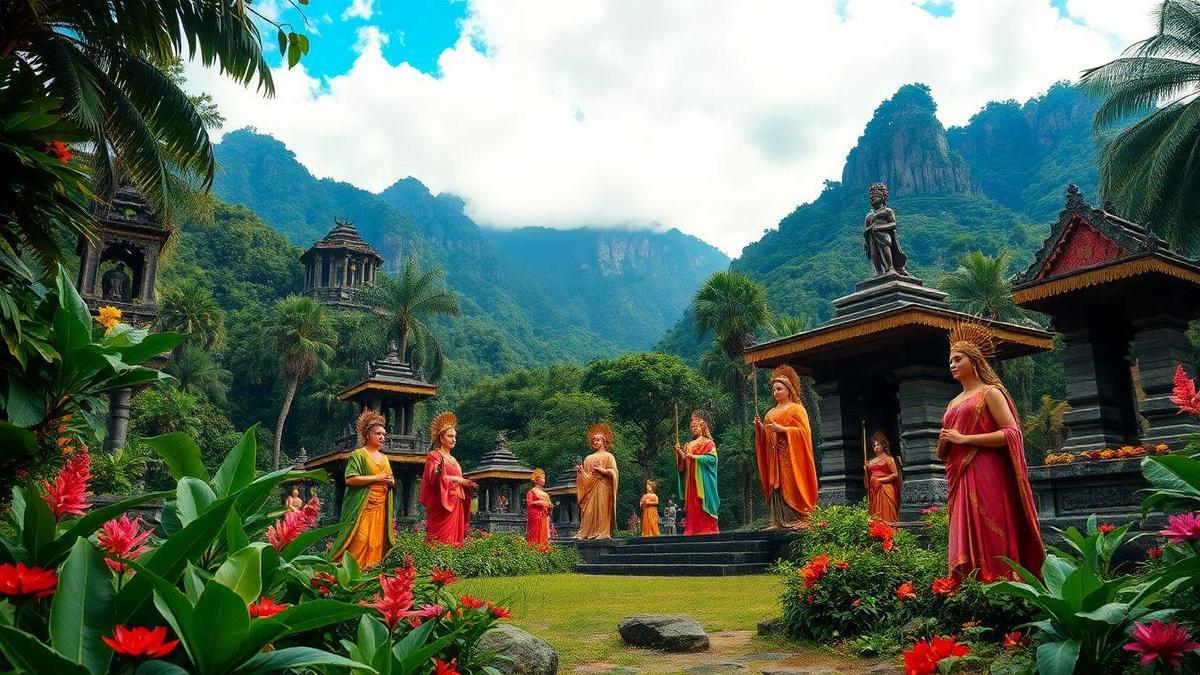
Advantages of Understanding the Aztec Pantheon and Its Relation to Natural Cycles
Understanding the Aztec pantheon and its relation to natural cycles offers several significant advantages. First, it provides deeper insight into the cultural and religious practices of the Aztecs. By understanding how the gods influenced agriculture and daily life, we can better appreciate the complexity and richness of Aztec culture. This understanding is fundamental for preserving indigenous history and traditions, which have often been marginalized or misinterpreted.
Additionally, studying the Aztec pantheon can teach us about the importance of sustainability and respect for the environment. The Aztecs had a profound understanding of natural cycles and knew that their actions had direct consequences on the land. This wisdom is extremely relevant today, as we face global environmental challenges. Learning from the Aztec worldview can inspire more sustainable practices and greater awareness of the importance of living in harmony with nature.
Another advantage of understanding the Aztec pantheon is the opportunity to apply its lessons in contemporary contexts. Aztec mythology highlights the importance of community, teamwork, and mutual respect. These principles are universal and can be applied in various areas, from education to business management. By integrating these values into our lives, we can foster a more collaborative and respectful environment.
Finally, understanding the Aztec pantheon and its connection with natural cycles enriches our appreciation of cultural diversity. Every civilization has its own beliefs and practices reflecting its relationship with the world. Studying the Aztec pantheon invites us to recognize and value this diversity, promoting intercultural dialogue that is essential in our globalized world.
How Aztec Gods Influence Agriculture and Rituals
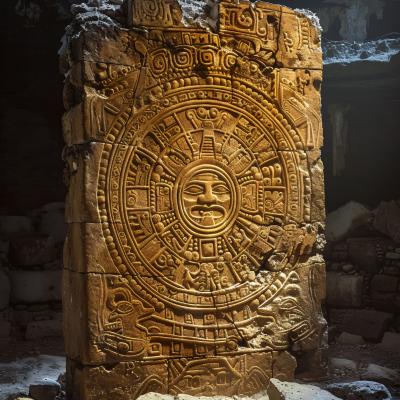
Aztec gods played a crucial role in agriculture and rituals, directly influencing food production and the community’s social life. Agriculture was the foundation of the Aztec economy, and the relationship with deities was essential to ensure abundant harvests. The Aztecs dedicated rituals and offerings to gods like Tlaloc, who was invoked to guarantee the rainfall necessary for plant growth. Thankfulness ceremonies and petitions were performed at specific times in the agricultural calendar, showing the interdependence between religion and farming.
Besides Tlaloc, other gods such as Xipe Totec, the god of fertility and renewal, also played important roles in agricultural practices. Xipe Totec was associated with transformation and the life-death cycle of plants, symbolizing the importance of constant renewal in nature. The Aztecs believed that by honoring these gods, they could ensure not only rich harvests but also the health and well-being of the community. Agricultural rituals often included dances, music, and offerings, creating a spiritual connection with the land.
The influence of Aztec gods also extended to rituals marking the seasons of the year. Each season was seen as a cycle bringing changes and opportunities. For example, the arrival of spring was celebrated with festivals honoring the fertility of the land, while autumn was a time of thanksgiving for the harvests. These celebrations not only strengthened the community’s spiritual connection with the gods but also promoted social cohesion and cultural identity.
Moreover, the relationship between gods and agriculture reflected the Aztec view that humans were part of a larger cosmos. It was believed that human actions, such as rituals and offerings, could directly influence natural cycles. This perspective emphasized the community’s responsibility to maintain harmony with nature and the gods, highlighting the importance of respecting and caring for the land to ensure survival and prosperity.
The Symbolism of Natural Elements in Aztec Mythology
Natural elements such as water, fire, earth, and wind hold profound symbolic significance in Aztec mythology, serving as manifestations of divine forces that shape the cosmos and human life. Each element is associated with specific gods and rituals, reflecting the Aztecs’ deep understanding of the environment and their desire to maintain balance within it. These symbols helped the Aztecs explain natural phenomena and provided a framework for their religious and cultural practices.
Water, for example, was a vital element connected to life and fertility. Tlaloc, the rain god, governed water and storms, and his favor was essential for successful agriculture. Water symbolized purification and renewal, and ceremonies involving water were common to ensure rain and fertility. Rivers, lakes, and springs were seen as sacred, acting as portals between the earthly realm and the divine.
Fire, on the other hand, represented transformation and power. It was associated with gods such as Xiuhtecuhtli, the god of fire and time, who embodied both destructive and creative forces. Fire rituals symbolized purification, renewal, and the cyclical nature of existence. The burning of offerings and controlled use of fire in ceremonies underscored its sacred role in sustaining cosmic order.
Earth and wind were also fundamental symbols. Earth was linked to fertility, stability, and the material world, often represented by gods like Coatlicue, the earth goddess who gave birth to life and death. Wind, governed by Ehecatl, symbolized breath, life force, and communication between the gods and humans. The interplay of these elements in myths illustrated the Aztec belief in a dynamic universe where balance among natural forces was crucial for harmony and survival.
Did You Enjoy Learning About the Aztec Pantheon and Its Relationship with Natural Cycles?
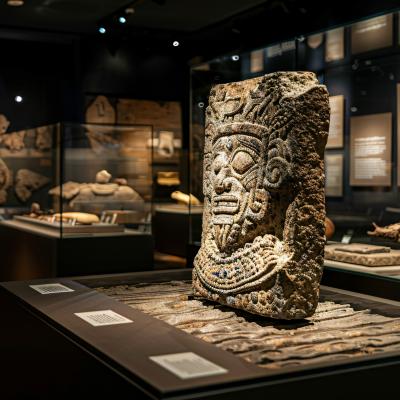
Exploring the Aztec pantheon and its connection with natural cycles offers a fascinating view of how an ancient civilization understood and interacted with the world around them. Through mythology, rituals, and agricultural practices, the Aztecs demonstrated a profound reverence for nature and an understanding of the interconnections that sustain life.
We hope this article has sparked your interest in learning more about the rich Aztec culture and its valuable lessons for the contemporary world. The relationship between humans and nature is a timeless theme that continues to resonate today, and Aztec wisdom can guide us toward a more sustainable and harmonious future.
Frequently Asked Questions
What is the Aztec pantheon?
The Aztec pantheon is a group of gods and goddesses important in Aztec culture and connected to nature and daily life. Each god has their own role and domain.
How does the Aztec pantheon relate to natural cycles?
The Aztecs believed their gods controlled nature. For example, some deities were responsible for rain and agriculture. This shows the connection between the Aztec pantheon and natural cycles.
Who are some important deities in the Aztec pantheon?
Some famous deities include Quetzalcoatl, Tlaloc, and Huitzilopochtli. Each has unique characteristics and relates to aspects of nature.
Why did the Aztecs perform rituals for their gods?
The Aztecs performed rituals to please their gods. They believed this brought good harvests and protection. The relationship with natural cycles was central to these rituals.
What happens if we do not honor the gods, according to the Aztecs?
The Aztecs believed that dishonoring the gods would cause natural disasters. This could result in droughts, famines, or wars. Therefore, maintaining this relationship was essential for them.
How did the Aztecs incorporate natural elements into their daily rituals and ceremonies?
The Aztecs used natural elements like water, fire, earth, and wind in their rituals to honor the gods and maintain cosmic balance. For example, water was used in purification rites, fire in offerings and renewal ceremonies, earth in agricultural blessings, and wind in prayers for communication with the divine. These practices reinforced their connection to nature and ensured harmony between humans and the environment.

